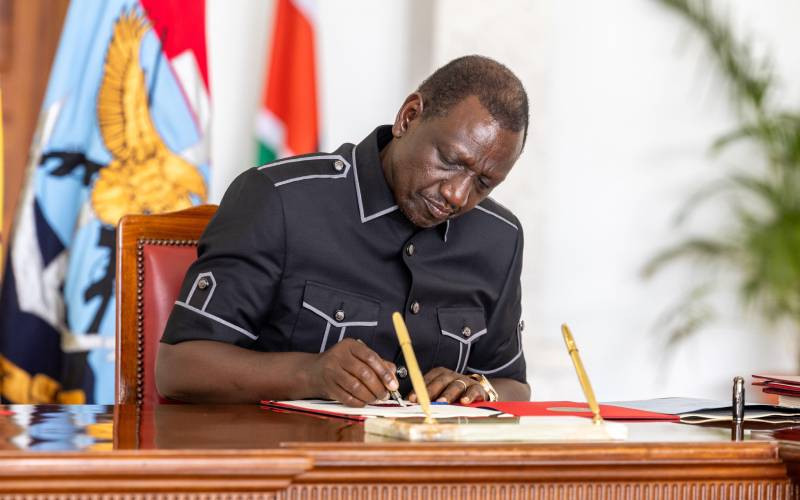As the proposed Water Bill 2014 weaves its way from the National Assembly to the Senate, the fundamental question we ought to ask ourselves is: how can we get mobile telephony, digital cable and Internet in our homes, but not clean water?
In part, the answer to this question lies in the content of our water laws. Water laws provide the framework upon which the decisions of how water in the country is distributed, protected and controlled. They encompass everything from the protection against pollution, to the damming of a river to the supply of drinking water in homes.
In 2010, the adoption of a new Constitution threw the sector into a spin with the devolution of water and sanitation services delivery – the backbone and barometer of the water sector’s health.
The Constitution, among others, provided in Article 43 for the right to reasonable standards of sanitation services as well as a right to clean and safe water in adequate quantities.
In Schedule 4, the Constitution delineates how these functions ought to be shared between the national and county governments.
Five years after the promulgation of the Constitution, the sector is yet to make headway in aligning the policy and legal landscape to the supreme law. Why has it taken a sector that was way ahead in sectoral reforms much longer to adjust to the new Constitution?
One of the most glaring flaws in the proposed water law is that while it recognises the citizens’ rights to water but omits sanitation, the function of developing the standards for the realisation of these rights will be undertaken by the ministry itself – essentially making the minister a referee and player in determining the extent of ministry’s own obligations to the public.
In the 2002 reforms, water governance was characterised by a complex division of powers and responsibilities distributed at two levels for water resources – national and river basin – and three levels (national, river basin and district/municipal level where service provision happens) for water services delivery. The Water Bill 2014 largely retains this architecture intact and makes a poor attempt at recycling the same old institutions.
The Constitution anticipated at least three clear shifts in water management with greater emphasis on services delivery, governance and sector financing, all of which the proposed law fails to address.
A second flaw in the water bill is the centralisation of decision making system with an overly dominant national government in all apex bodies – the Water Resources Authority, the Water Harvesting Authority, the Water Services Regulatory Board and Water Works Boards which coordinate and control the resources and water services development. This governance approach does not allow for sufficient demand-side input during the key sector decisions.
Another fundamental flaw in the proposed bill is the retention of the Water Sector Trust Fund to provide conditional and unconditional grants to counties in addition to the Equalisation Fund and to assist in financing the development and management of water services in marginalized areas.
Essentially, this bill sets up an additional body outside the mechanism set by the Constitution to finance the county governments. This is not only unnecessary but also undesirable.
And so back to the question, does the proposed Water Bill 2014 put us on a path of getting the process of constitutional alignment right? The correct answer is no, it doesn’t.
 The Standard Group Plc is a
multi-media organization with investments in media platforms spanning newspaper
print operations, television, radio broadcasting, digital and online services. The
Standard Group is recognized as a leading multi-media house in Kenya with a key
influence in matters of national and international interest.
The Standard Group Plc is a
multi-media organization with investments in media platforms spanning newspaper
print operations, television, radio broadcasting, digital and online services. The
Standard Group is recognized as a leading multi-media house in Kenya with a key
influence in matters of national and international interest.
 The Standard Group Plc is a
multi-media organization with investments in media platforms spanning newspaper
print operations, television, radio broadcasting, digital and online services. The
Standard Group is recognized as a leading multi-media house in Kenya with a key
influence in matters of national and international interest.
The Standard Group Plc is a
multi-media organization with investments in media platforms spanning newspaper
print operations, television, radio broadcasting, digital and online services. The
Standard Group is recognized as a leading multi-media house in Kenya with a key
influence in matters of national and international interest.







